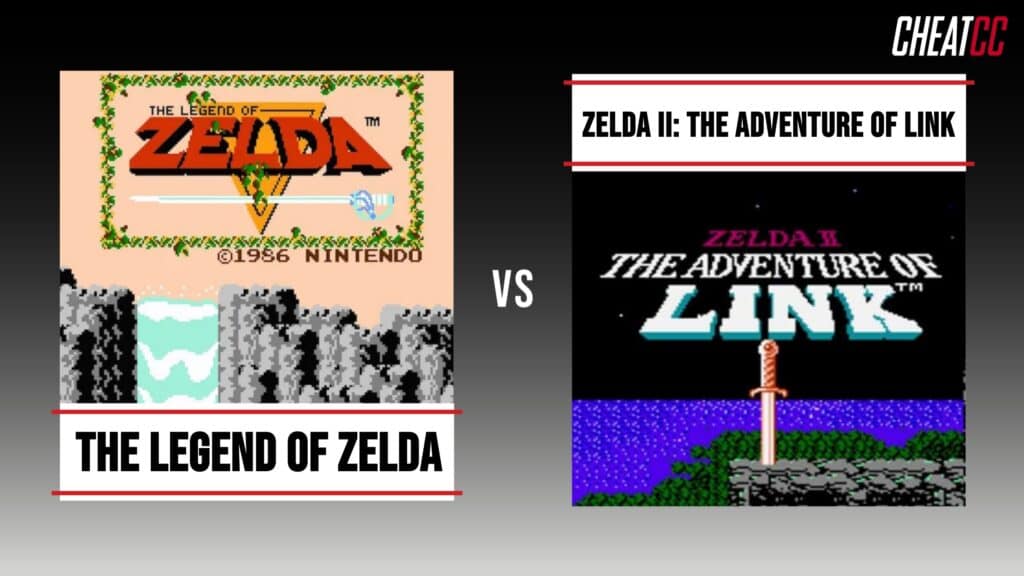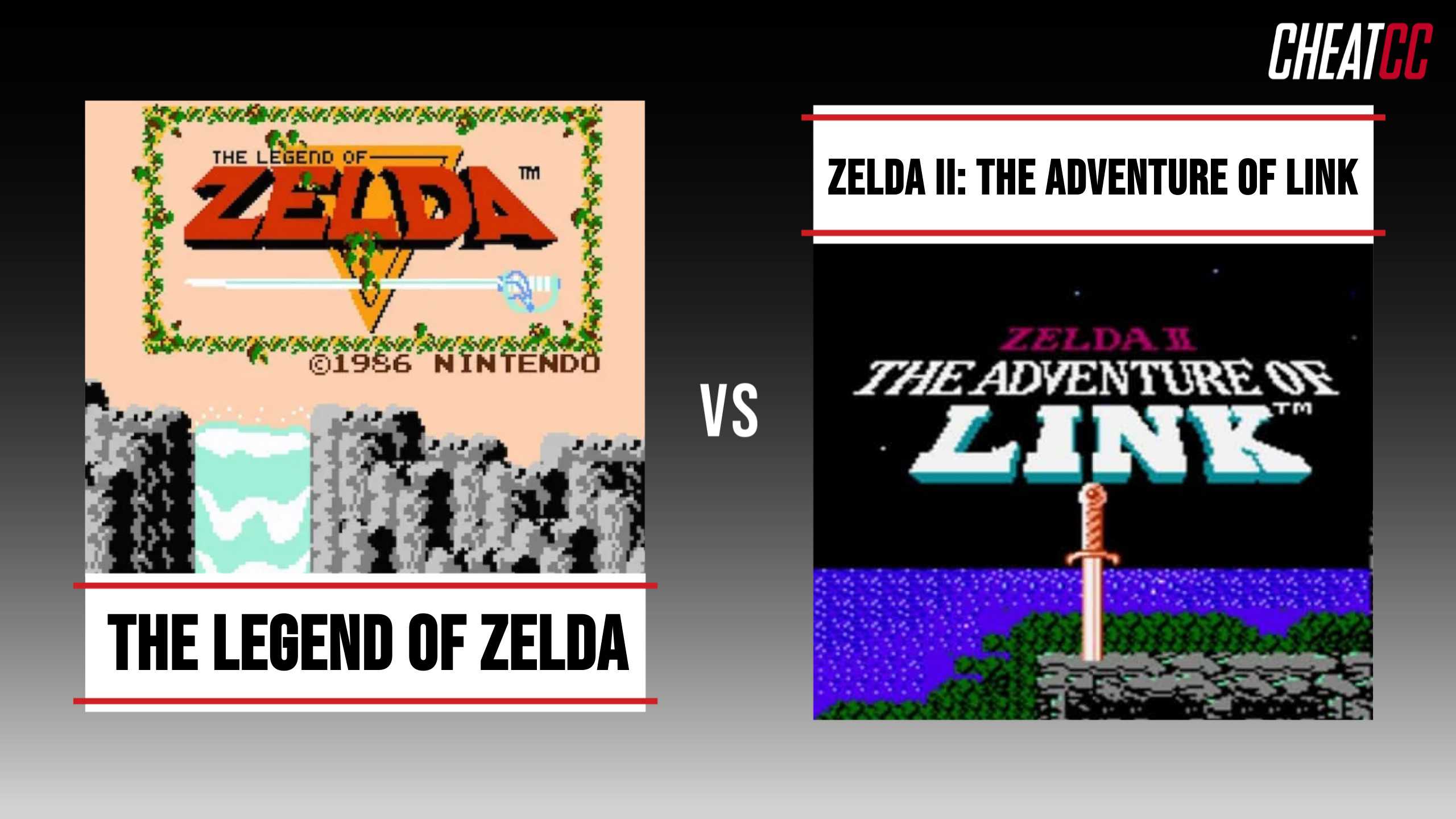Despite both being games in The Legend of Zelda series, you’d be hard-pressed to find two more different titles than the original Legend of Zelda and its direct sequel Zelda II: The Adventure of Link. As was the case for several sequels to iconic games on the NES, Zelda II takes many of the mechanics from the first game and flips them on their head, completely subverting players’ expectations and, as a result, delivering a game that exists as a bit of a black sheep in its respective franchise. Super Mario Bros., Castlevania, Zelda; each of these iconic NES classics has a sequel that is almost a complete departure from what came before.
Perhaps tellingly, the sideways experiments present in Zelda II‘s gameplay would not be repeated in another series title. The next game in the series, A Link to the Past on SNES, makes a triumphant return to the top-down perspective and action-adventure of the original. Still, Zelda II does have some of the most iconic moments in many fans’ memories of the series from their formative years, and it’s a much better game in hindsight than many people give it credit for. That said, there’s only two titles in the series on NES compared to Mario’s three. Since this town isn’t big enough for both, it’s time to see which NES Zelda game reigns supreme.
The Legend of Zelda vs Zelda II: Link’s Adventure: Side-by-Side Comparison

Given the title screens for each game, you’d be forgiven for thinking that Zelda II was just more of what fans loved in The Legend of Zelda, but you’d be mistaken. Rather than provide players with another top-down action-adventure, the green-clad Link returns in an action-RPG complete with multiple towns and NPCs. Gone is the isolation and sense of freedom from the original game, replaced with a linear adventure that is equal parts frustrating and obtuse. Just like Castlevania II, Zelda II really wants players to pay attention to the clues given by NPCs. Unfortunately, the limits of the hardware and rushed localization make some of those hints easier to deciper than others. In terms of how the two compare, let’s take a look at the chart below:
| Feature | The Legend of Zelda | Zelda II: The Adventure of Link |
|---|---|---|
| Link | ✅ | ✅ |
| Zelda | ✅ | ✅ |
| Ganon | ✅ | ✅ |
| Real-time combat | ✅ | ✅ |
| Dungeons with puzzles and bosses | ✅ | ✅ |
| Overworld map | ✅ | ✅ |
| Towns | ✅ | |
| RPG-style progression | ✅ | |
| NPCs | ✅ | ✅ |
| Hints in the Game World | ✅ | ✅ |
| Top-Down Perspective | ✅ | |
| Sideways Perspective | ✅ | |
| Gold Cartridge | ✅ | ✅ |
| Key Items & Upgrades | ✅ | ✅ |
| Shadow Link | ✅ |
The Legend of Zelda vs Zelda II: Link’s Adventure: 5 Must-Know Facts
Here are 5 must-know facts about The Legend of Zelda vs Zelda II: The Adventure of Link:
- In Japan, Zelda II arrived less than a year after the release of Legend of Zelda and 7 months before the release of Legend of Zelda in the West. Thanks to advancements in technology making the porting of Legend of Zelda to the NES possible (from the Famicom Disk System), American players got Zelda II just a year after the first game in December of 1988.
- While The Legend of Zelda is nearly universally loved and considered one of the most important games ever made, Zelda II doesn’t share the same degree of adoration. Instead, most fans consider the game to be a failed experiment in the Legend of Zelda chronology.
- The Princess Zelda from the original game is not the same Princess Zelda that Link is saving in the story of Zelda II. Instead, this is Princess Zelda I, who rests in an eternal slumber thanks to a curse placed on her by an evil wizard hoping to find the Triforce. Due to Princess Zelda I’s refusal to help the wizard (and, by proxy, Ganon) she rests in suspended animation in the North Castle.
- Although Ganon features as the eternal adversary of every game in the series, players don’t actually fight him in Zelda II. Instead, the final boss of the game is Link’s Shadow (otherwise known as Dark Link), which is a shadow manifestation of Ganon’s spirit in the form of Link’s doppelganger.
- Both The Legend of Zelda and Zelda II feature unique packaging compared to every other game on the NES, including both games featuring the iconic gold-plated cartridge. These two games are the last in the series to feature a gold cartridge until the Nintendo 64-era titles.
The Legend of Zelda vs Zelda II: Link’s Adventure: A Change in Perspective
The first thing that player’s notice when booting up Zelda II for the first time is the switch in perspective from the original. Rather than show Link in a top-down view throughout the entire adventure, Zelda II uses two varying perspectives. In the overworld map, players view Link from a traditional top-down view and can even find themselves facing off against enemies. However, when Link begins one of these combat encounters, enters a dungeon, or wanders into a town, the perspective switches to that of a side-scrolling hack-n-slash game. Considering that every other 2D Zelda uses the top-down perspective, it’s safe to say this perspective shift didn’t sit well with fans.
The Legend of Zelda vs Zelda II: Link’s Adventure: Nintendo’s Risk-Taking Sequels
Zelda II actually continues a trend of late 1980s NES titles that were vastly different sequels from their iconic predecessors. The first of these is Super Mario Bros. 2, releasing in the West just one month before Zelda II. Viewing the original sequel to Super Mario Bros. as being too difficult for a Western audience, Nintendo took the Japan-only game Doki Doki Panic and replaced its playable characters with Mario, Luigi, Peach, and Toad. Similarly, Castlevania II: Simon’s Quest greatly expands on the template of the first game to bring Simon Belmont into a non-linear adventure with obtuse puzzles and a full day/night cycle. Though Zelda II is a distinct departure from Legend of Zelda, this was par for the course at the time.
The Legend of Zelda vs Zelda II: Link’s Adventure: RPG Elements
Even with the change in perspective, Zelda II and the original Legend of Zelda share plenty of characteristics to where its obvious that both games belong to the same series. That said, Zelda II does differentiate itself enough from its predecessor by including some RPG progression as part of powering up Link. Zelda II is the only title in the series where Link gains experience from defeating foes, and his health and strength become dependent on leveling up. Featuring influence from the runaway popularity of games like Final Fantasy and Dragon Quest, The Adventure of Link is definitely an action-RPG unlike the first game’s action-adventure.
Bottom Line
For all of its willingness to experiment with a successful formula and an interesting premise, Zelda II ultimately fails to live up to the precedent that the original Legend of Zelda establishes. While The Legend of Zelda can count itself among the most important and impactful games that the medium has ever produced, Zelda II is much more of an odd duck in the franchise and an example of the series still trying to find its footing. In terms of which game is the better NES-era Zelda, it’s no contest. The Legend of Zelda reigns supreme.
